Did you know that there are over 10,000 bird species in the world? If you are anything like me, you may be curious to learn about these different birds. So, in this article, we will start by exploring the vast diversity of birds whose names start with the letter “U.”
Discover birds like ural owls, uniform crakes, uniform finches, upland buzzards, undulated tinamous, unicolored jays, unicolored blackbirds, unstreaked tit-tyrants, ultramarine lorikeets, umbrellabirds, usambara eagle-owls, usambara weavers, and unadorned flycatchers. Each bird has its own captivating story to share!
Let’s get started by reading below and looking at some of the incredible birds that start with U!
1. Uhehe Fiscal (Lanius collaris marwitzi)
The Uhehe fiscal is a slender bird with black and white feathers. Both males and females look alike. Its upper parts have a dull black color, accompanied by a white supercilium (eyebrow) and white scapulars. The rump, back, and upper tail coverts display a dark grey shade, while the long tail remains black.
This unique species is found exclusively in the uplands of southern and eastern Tanzania. Sadly, the Uhehe fiscal faces a population challenge with less than 10,000 breeding pairs and a limited habitat range.
2. Uniform Finch (Haplospiza unicolor)
The uniform finch exhibits distinct characteristics between males and females. Males are adorned in plain dark-gray plumage with wing feathers displaying darker centers. On the other hand, females showcase an olive-brown coloration with streaks on their breasts and a paler belly. This finch species also sings a buzzy and high-pitched song.
It inhabits the southern Atlantic Forest, primarily in Paraguay, Brazil, and the far northeastern region of Argentina.
3. Uniform Crake (Amaurolimnas concolor)
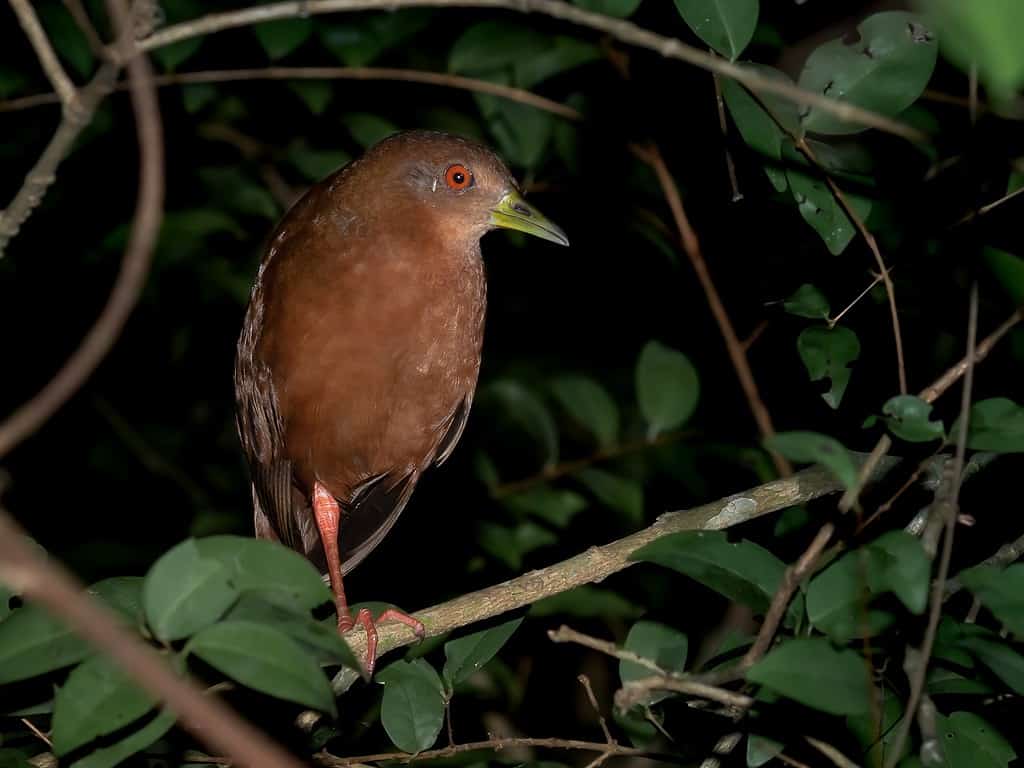
Found across South and Central America, the uniform crake has a very unique appearance.
©Hector Bottai / CC BY-SA 4.0 – License
The uniform crake is a brown bird with striking rufous underparts, a bill that displays a dull greenish-yellowish shade, and legs that are reddish in color. This species is larger than most crake species.
Spotting this elusive bird is a challenge as it stealthily creeps through the dense understory of forests. However, its distinctive series of up-slurred whistled notes make it easier to identify by sound. The uniform crake can be found across South and Central America.
4. Ural Owl (Strix uralensis)
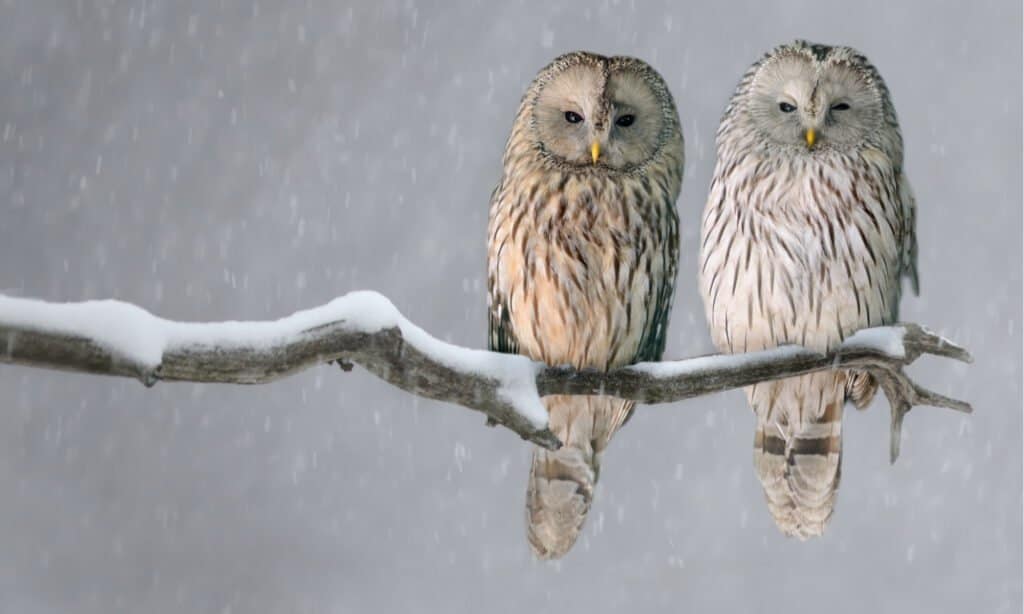
A bird that starts with U, the Ural owl has a variety of calls and drops down on its prey when hunting.
©AlekseyKarpenko/Shutterstock.com
The Ural owl is characterized by its large size, gray-and-white plumage, and wide, pale face without distinctive markings. Additionally, its eyes are dark, and its legs are covered with feathers. This species of owl is widely distributed, spanning from northern Europe to Asia.
When hunting, the Ural owl uses a unique strategy, opting to drop down directly onto its prey from a perch rather than engaging in active flight.
5. Ultramarine Flycatcher (Ficedula superciliaris)
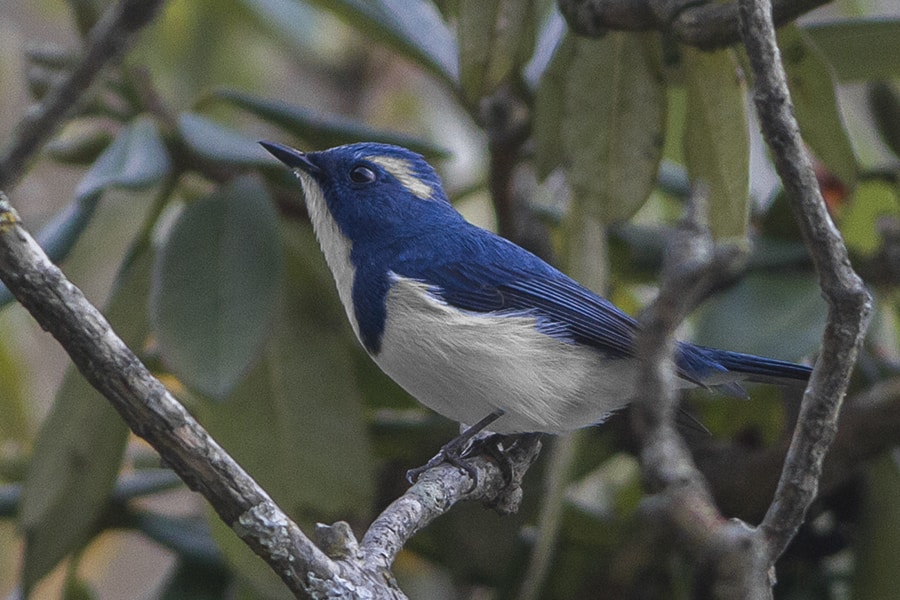
This bird thrives near the base of the massive
Himalayan
Mountains in southern and Central Asia.
©Dibyendu Ash / CC BY-SA 3.0 – License
The ultramarine flycatcher is a stunning bird recognized by the deep blue coloration on its upper body. The sides of its head and neck also display this captivating deep blue shade, while a prominent white patch stretches from the center of the throat, through the breast, and down to the belly.
Clinal variation along the Himalayan foothills gives rise to differing amounts of white on the brow and tail, which further distinguishes three subspecies. This bird breeds in the Himalayan foothills and flies to southern India for the winter season.
6. Upland Buzzard (Buteo hemilasius)
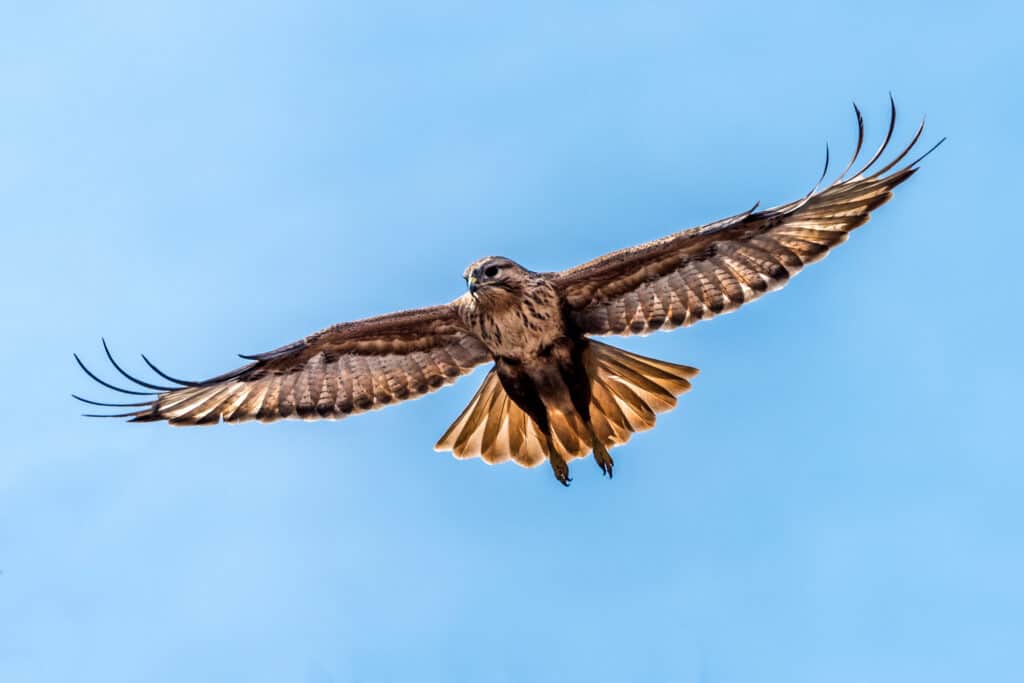
As a large bird of prey, te Upland Buzzard (Buteo hemilasius) is a migratory bird of prey that lives in Asia.
©iStock.com/Jason_YU
The upland buzzard holds the distinction of being the largest buzzard species worldwide, possessing a striking resemblance to a blend of buzzard and eagle due to its impressive wingspan and tail size. It also features a light brown head with a wide brown streak near the mustache. Additionally, there is a white patch that forms on the nape of the bird, bordering its head. The upland buzzard’s upper body, including the wing coverts, displays a light brown shade with pale rufous edges.
This majestic bird is widely distributed across Asia, with Mongolia and China serving as central regions of its habitat.
7. Unicolored Antwren (Myrmotherula unicolor)
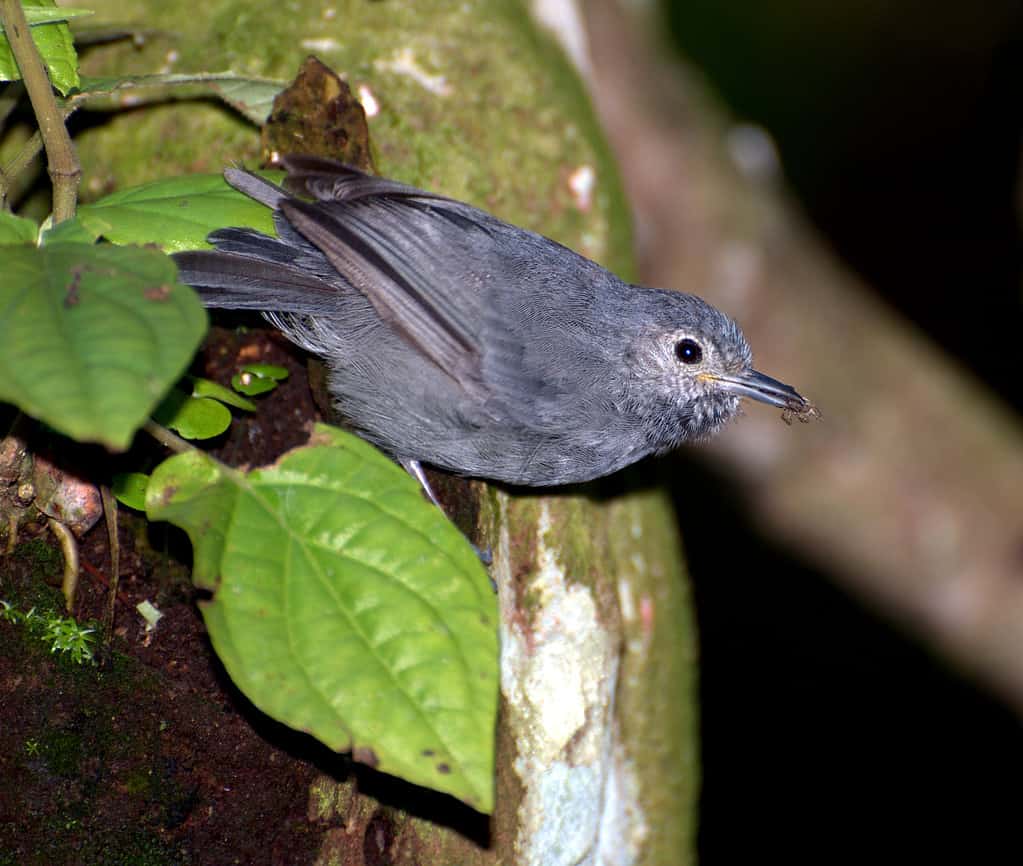
Another bird that starts with U is the unicolored Antwren.
©https://www.flickr.com/photos/dariosanches/ / CC BY-SA 2.0 – License
The male and female unicolored Antwrens have distinctly different characteristics. Males exhibit a uniform gray coloration with a small dark patch on the throat, while females display a uniform brown-gray hue with less gray in the head compared to males.
This bird is recognized for its lively behavior and regular companionship with groups of different species. The unicolored Antwren is found exclusively in southeastern Brazil.
8. Undulated Tinamou (Crypturellus undulatus)
The undulated tinamou displays varying shades of brown and grey, with a distinctive black, barred to faint vermiculated pattern adorning its back and neck, the intensity of which depends on the subspecies.
While primarily found in the Amazon basin, this bird also inhabits many parts of South America. Despite being heavily hunted in certain areas, the undulated tinamou remains abundant across most of its range.
9. Upland Antshrike (Thamnophilus aroyae)
The male upland antshrike has primarily gray plumage with white wingbars and pale eyes, while the female appears brown with a gray face. This small antshrike species is primarily found in the Andes of Bolivia, but it is also found in the adjacent areas near the border with Peru. It communicates through nasal caws, either individually or in short series.
10. Unstreaked Tit-Tyrant (Uromyias agraphia)
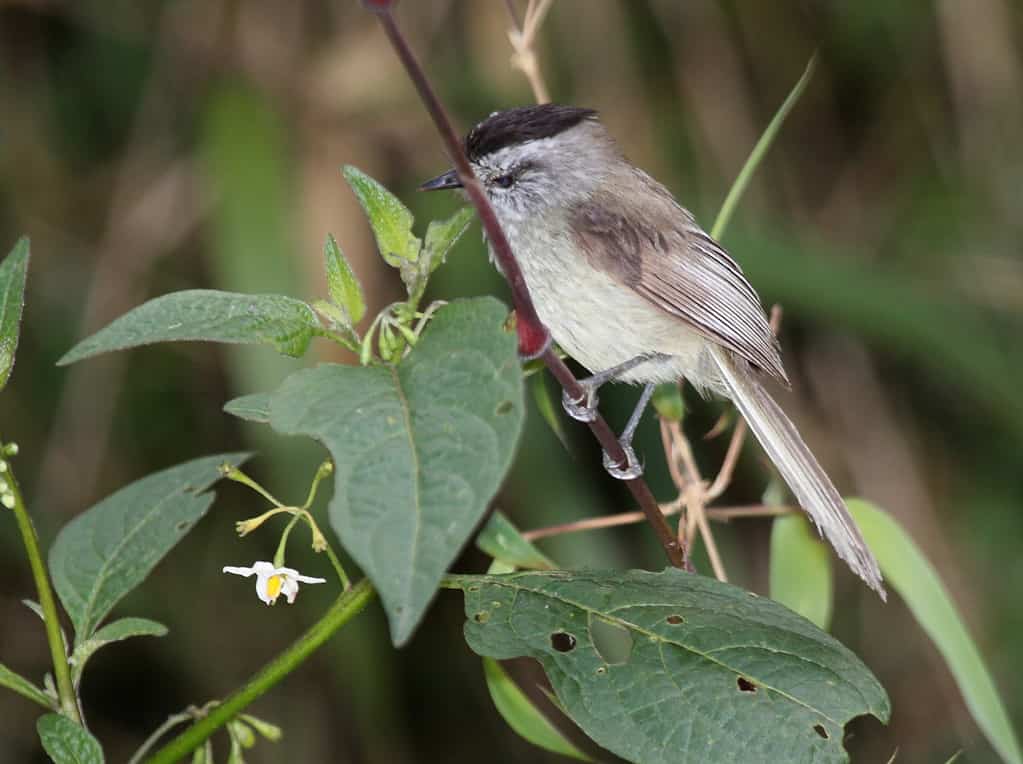
A Peruvian bird, the unstreaked tit-tyrant has a distinguishing eyeline and crown.
©Dominic Sherony / CC BY-SA 2.0 – License
The unstreaked tit-tyrant showcases a brownish gray body with distinguishing features such as a black eyeline and crown, and a white eyebrow. Furthermore, faint streaking may be present on the face and chest. With a big-headed appearance, this bird typically perches in an upright position.
The unstreaked tit-tyrant is exclusively found in Peru. Listen attentively for its melodic and lisping high song and its distinctive stuttered “peep” call notes.
11. Unadorned Flycatcher (Myiophobus inornatus)
The unadorned flycatcher is a medium-sized flycatcher commonly found in montane forests. Its plumage is a dull greenish gray, complemented by wings displaying a subdued reddish coloration and weak reddish wing bars. Additionally, many individuals exhibit a completely pale whitish eye-ring.
This species can be observed either as pairs or as individuals joining mixed-species flocks. The unadorned flycatcher is primarily found in Bolivia and Peru.
12. Upland Pipit (Anthus sylvanus)

Found in Asia, the upland pipit is a large pipit bird.
©Pkspks / CC BY-SA 4.0 – License
The upland pipit is a relatively large pipit species. It has fine dark streaks all across its body, accompanied by paler underparts. This bird has an extensive range and is not endangered.
You can find this bird in China, Afghanistan, Hong Kong, Nepal, India, and Pakistan.
13. Unicolored Jay (Aphelocoma unicolor)

Another bird that starts with U, the unicolor jay is deep-blue in color.
©Francesco Veronesi / CC BY-SA 2.0 – License
The aptly named unicolor jay has only one color on its entire body. It has a consistent deep-blue coloration and is primarily found in highland evergreen and pine-evergreen forests. Like other jays, it tends to be observed in groups and is frequently associated with mixed-species feeding flocks.
This bird is native to the cloud forests of Central America, as well as the southern and southeastern regions of Mexico.
14. Unicolored Blackbird (Agelasticus cyanopus)
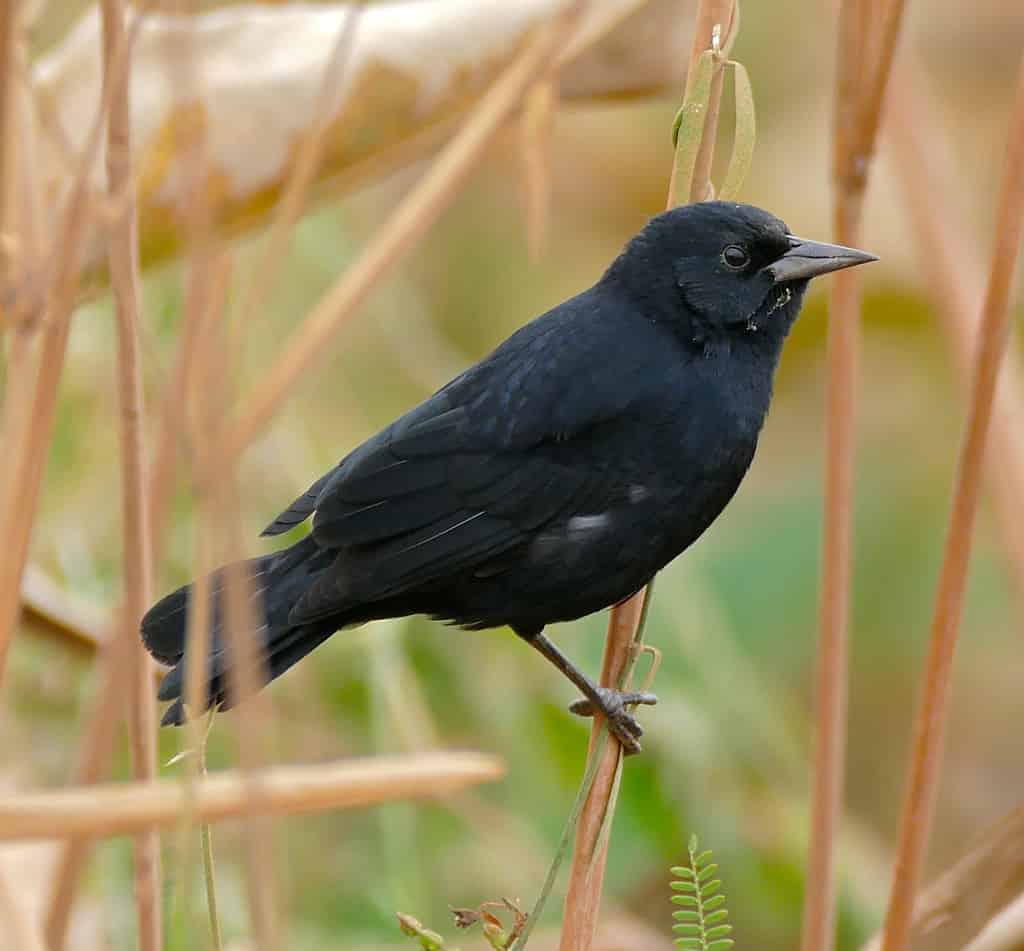
The males of this bird are black is color.
©Bernard DUPONT from FRANCE / CC BY-SA 2.0 – License
The male unicolored blackbird lives up to its name, boasting sleek, glossy black plumage and dark eyes. In contrast, the species displays sexual dimorphism, as the female showcases streaked brown and black feathers with a yellow belly adorned with brown streaks.
This blackbird is indigenous to South America. Its melodic song consists of a rattling sound followed by a delightful series of trills.
15. Ultramarine Lorikeet (Vini ultramarina)
The ultramarine lorikeet showcases no differences in appearance between males and females. Adult individuals boast bright orange beaks and legs. Furthermore, the head showcases a turquoise hue on the front and a Prussian blue color on the cap. Blue feathers with white flecks adorn the cheeks and throat.
This lorikeet species is exclusive to the Marquesas Islands and can be found in montane forests above an elevation of 2296 feet.
16. Upcher’s Warbler (Hippolais languida)

A medium-sized bird, the Upcher’s warbler has a broad range.
©Ani Sarkisyan / CC BY 4.0 – License
The Upcher’s warbler, a medium-sized bird, bears a resemblance in size to the icterine warbler but can be distinguished by its slightly longer bill, shorter wings, and elongated tail. Its overall gray plumage is akin to that of the olivaceous warbler, yet the distinctive movements of its tail serve as a defining characteristic.
The Upcher’s warbler breeds across a broad geographic range, stretching from Turkey to Pakistan.
17. Umbrellabird (Cephalopterus)
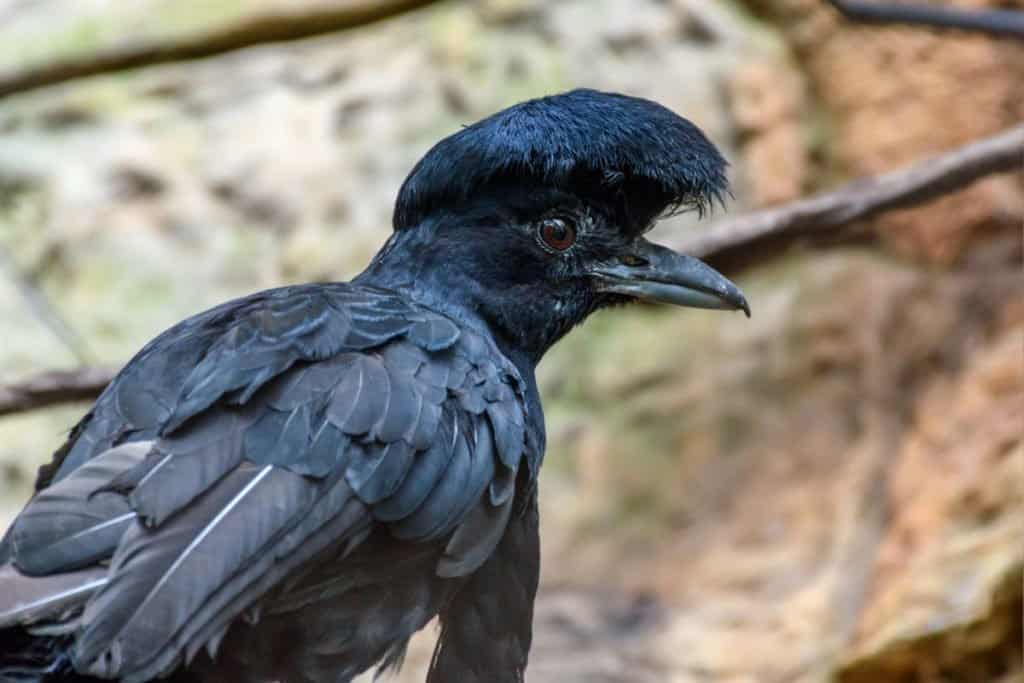
The distinctive crest on the umbrellabird’s head gives this bird its name.
©Jeff W. Jarrett/Shutterstock.com
Umbrellabirds earned their name from the distinctive umbrella-like crest atop their heads and the inflatable throat pouch resembling a tube. These magnificent birds hold the title of being the largest passerine species in South America, but sadly, their populations are declining due to habitat loss.
These birds play a crucial role in rainforest ecosystems by aiding in seed dispersal through the consumption of fruits.
18. Usambara Eagle-Owl (Bubo vosseleri)
The Usumbara eagle-owl is a remarkable large owl that showcases beautiful tawny brown feathers on its upper body, highlighted with darker brown patterns. Its lower body is creamy white with brown patches on the chest and black stripes on the belly, giving it a unique appearance. The owl’s face has a pale tawny shade with wide black edges on the sides, and it also has long tawny brown ear tufts.
Native to Tanzania, the Usumbara eagle-owl sadly finds itself in a threatened status due to habitat loss.
19. Usambara Akalat (Sheppardia montana)
The Usambara akalat is a small, simple bird dwelling in the understory. It bears a resemblance to a blend between a robin and a flycatcher. Its plumage is generally dull brownish-olive in color, with a rusty rump and tail, a lighter throat, and a distinct pale patch between the eye and bill.
This species is unique to the Usambara Mountains of Tanzania. Its melodic song consists of a delightful mix of up-and-down high-pitched whistles, while its alarm call is a grating “drrrzzt, drrrt, drrrt.”
20. Usambara Weaver (Ploceus nicolli)
The Usambara weaver is a unique species of weaver bird recognized by dark upper parts, an orange bib, and a yellow belly. Furthermore, the male exhibits a yellowish forehead patch, distinguishing it from the female.
This bird lives in specific areas of montane forests, generally in pairs that frequently join mixed-species flocks. It moves along branches in a manner reminiscent of a nuthatch. While it may resemble the forest weaver, the Usambara weaver can be easily differentiated by its orange breast.
Notably, its vocalizations include an uncommon “seet-swit” call and a distinctive “radio static” song with a rollicking rhythm.
The Largest Bird That Starts with U
Upland Goose (Chloephaga picta)
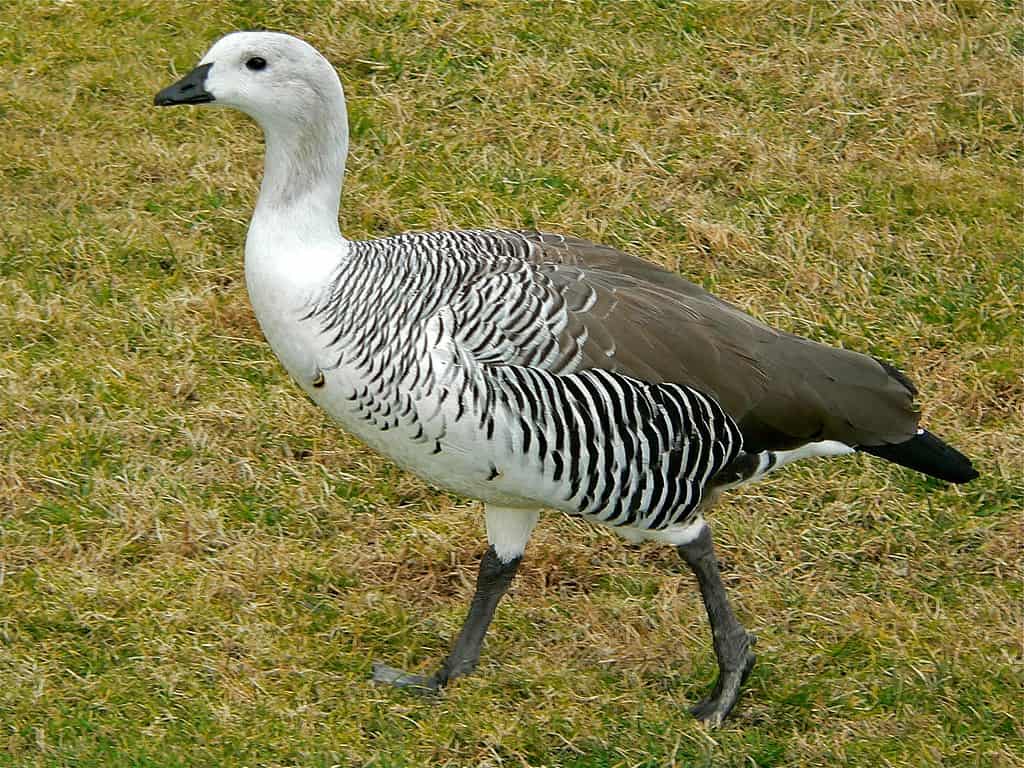
The upland goose is the largest bird that starts with U.
©Bernard DUPONT from FRANCE / CC BY-SA 2.0 – License
Introducing the upland goose, a magnificent bird that holds the title of being the largest avian species starting with the letter U.
The male upland goose boasts a striking white neck, with some individuals displaying a clean white breast and belly, while others showcase a dark-barred body. On the other hand, the female has a more inconspicuous appearance, featuring a brownish overall coloration and a head and neck that range from rusty brown to grayish brown.
This stunning bird is native to the open grassland areas of South America. Being primarily herbivorous, it generally sustains itself on a diet consisting of seeds, leaves, and stems. What makes these geese even more fascinating is their friendly nature, as flocks of thousands graze in a single pasture alone.
In terms of size, upland geese measure between 24 and 29 inches in length and have an average weight ranging from 5.9 to 7 pounds. These dimensions also establish them as the largest representatives of the Chloephaga genus.
The Fastest Bird That Starts with U
Upland Sandpiper (Bartramia longicauda)
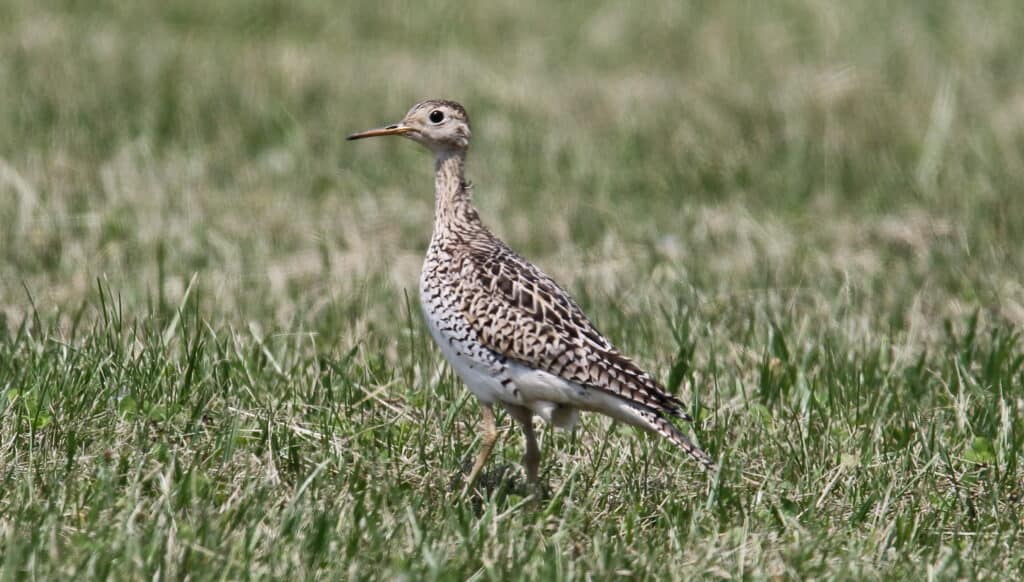
The upland sandpiper is the fastest bird that starts with U.
©2,718 × 1,546 pixels, file size: 2.81 MB, MIME type: image/jpeg – License
Presenting the upland sandpiper, a bird that claims to be the fastest bird beginning with the letter U. This shorebird possesses unique physical characteristics, including a slender neck, long legs, a large eye, a small dovelike head, and a straight, thin bill. This bird also has long wings.
Both adult upland sandpipers and their young display a marbled golden brown and blackish coloration on their upper body, while their underparts are white with dark streaks and chevron-shaped markings on the sides and breasts. Additionally, they have a white throat and a distinct white eyering.
Native to North and South America, the upland sandpiper thrives in open areas with tall grass that provides them with hiding spots. Their diet primarily consists of insects, with some seeds included. During migration, they swiftly travel to wintering areas in South American grasslands known as pampas and llanos, which closely resemble their nesting habitat. Along their journey, these sandpipers often make stopovers in agricultural fields.
While the exact speed of the upland sandpiper has not been measured, biologists believe that similar to other sandpiper species. They can reach impressive speed for their small size, flying up to 50 miles per hour. Specifically, their long and narrow wings are perfectly adapted for their extensive long-distance travels.
Summary of 20 Amazing Birds that Start with U
| Number | Common Name | Scientific Name |
|---|---|---|
| 1 | Uhehe Fiscal | Lanius collaris marwitzi |
| 2 | Uniform Finch | Haplospiza unicolor |
| 3 | Uniform Crake | Amaurolimnas concolor |
| 4 | Ural Owl | Strix uralensis |
| 5 | Ultramarine Flycatcher | Ficedula superciliaris |
| 6 | Upland Buzzard | Buteo hemilasius |
| 7 | Unicoloured Antwren | Myrmotherula unicolor |
| 8 | Undulated Tinamou | Crypturellus undulatus |
| 9 | Upland Antshrike | Thamnophilus aroyae |
| 10 | Unstreaked Tit-Tyrant | Uromyias agraphia |
| 11 | Unadorned Flycatcher | Myiophobus inornatus |
| 12 | Upland Pipit | Anthus sylvanus |
| 13 | Unicolored Jay | Aphelocoma unicolor |
| 14 | Unicolored Blackbird | Agelasticus cyanopus |
| 15 | Ultramarine Lorikeet | Vini ultramarina |
| 16 | Upcher’s Warbler | Hippolais languida |
| 17 | Umbrellabird | Cephalopterus |
| 18 | Usambara Eagle-Owl | Bubo vosseleri |
| 19 | Usambara Akalat | Sheppardia montana |
| 20 | Usambara Weaver | Ploceus nicolli |
The photo featured at the top of this post is © Pkspks / CC BY-SA 4.0 – License / Original
Thank you for reading! Have some feedback for us? Contact the AZ Animals editorial team.







